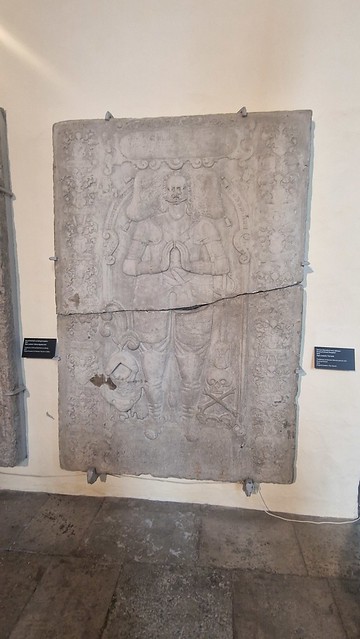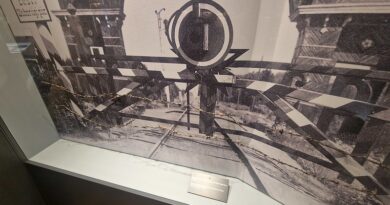Tallinn Trip – Niguliste Museum (Tombstone of Herman Nieroth and His Wife)
It frequently surprises me that anything in churches has survived the centuries of war and religious change, but this tombstone dates to 1642 and is from Türi church (which I assume is St. Martin’s Church). It’s the tombstone of Herman Nieroth and his wife Gerdruth Brinck. His effigy shows him in full armour, showing what a brave fighter he must have been, whilst there’s no effort made to depict Gerdruth. I have no idea when the tombstone cracked, but it was probably placed down in a church and thousands of people would have traipsed over it.
Herman Nieroth (c. 1572 – 1642) was a Swedish military officer and administrator who played a significant role in 17th-century Estonia. He served in the Swedish army during the Livonian War, eventually attaining the rank of Colonel. From 1633 to 1642, he held the important position of Lord Marshal of Estonia, responsible for maintaining law and order and overseeing the nobility. He also acted as an advisor to King Gustavus Adolphus of Sweden and participated in diplomatic negotiations with Russia and other neighbouring powers. Nieroth acquired substantial landholdings in Estonia, reflecting his wealth and influence. His tomb, featuring an effigy in full armour, is located in St. Nicholas’ Church, Tallinn, serving as a lasting reminder of his service and status. Nieroth’s career exemplifies the Swedish influence in Estonia during this period and the prominent role military figures played in the administration of the province. As for Gerdruth, I couldn’t find anything about her other than she was married to Herman.
I like seeing these in museums, churches and galleries as I must confess to a certain affection for a weathered and worn out tombstone, something which has seen a few centuries slide by and how it represents so many forgotten stories.





